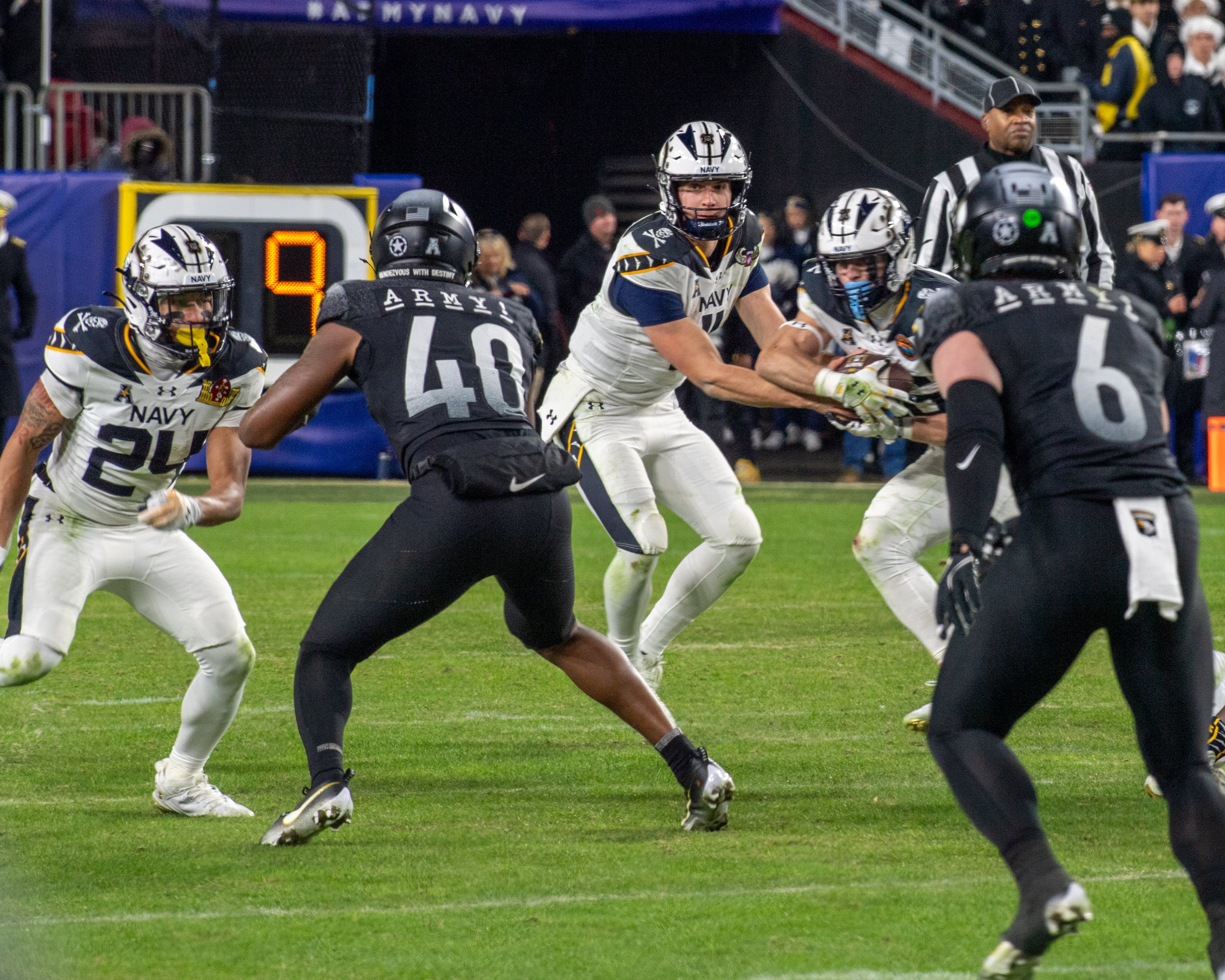In 2019 the Army expects to roll out a new, lighter body armor system. The armor will provide at least as much protection as today's system, but with more comfort, and greater flexibility to adjust based on the mission, Army officials said.
Already, improved ballistics materials have allowed the Army to cut the weight of TEP, when compared to the Army's current heavy-duty option, the Improved Outer Tactical Vest. The IOTV, when loaded with heavy plates, weighs about 31 pounds, while a comparable TEP system checks in at about 23 pounds, or 26 percent lighter.
Brown said the Army pushed with industry to reduce weight while meeting future threats. In addition, the ability to add and subtract different elements and plate inserts in the vest, is a real "highlight," Brown said. .In addition to TEP, the Army is developing new body armor plates and a new head protection system.
Soldier feedback has already played a major role in development of TEP, Brown said. Trials by soldiers at three different installation, as well as by Marines and special operations units, provided design advice and feedback. Brown said that ultimately helped produce a system earning a 95 percent positive feedback.
"One great aspect of the Soldier Protection System is we really listened to the voice of the customer, the soldier," Brown said. "Based on feedback from the soldier we were able to make design changes." What are some design changes soldier came up with?
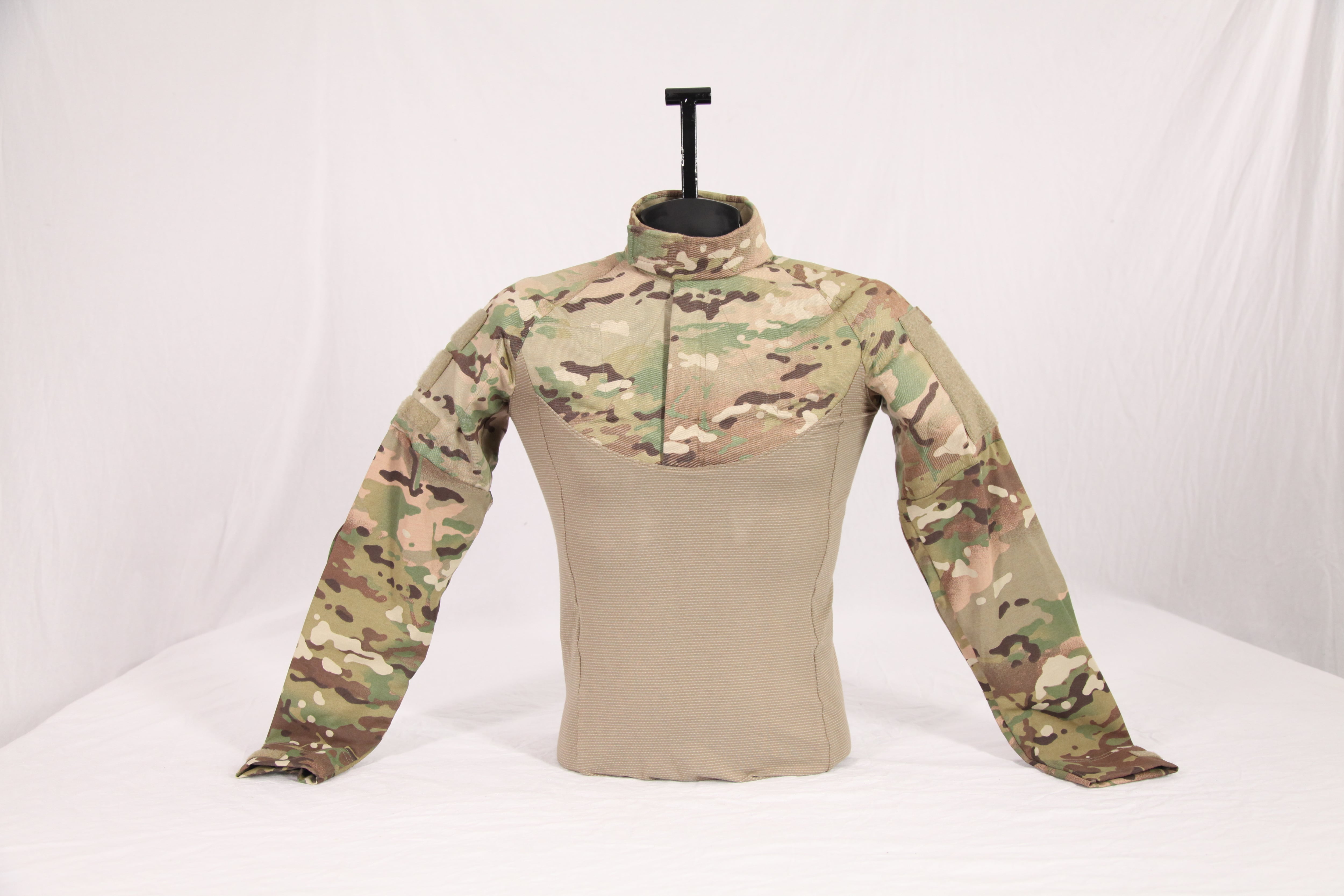
The Army's new Ballistic Combat Shirt was designed to improve comfort.
Photo Credit: Courtesy PEO Soldier
Ballistic Combat Shirt : Designed to be worn with a ballistic vest, the shirt consists of protection on the upper back, upper chest and neck, while completely covering the arms with ballistic-protective sleeves. The material has a similar feel to the Army combat shirt, but is more comfortable and offers ballistic fragmentation protection, Brown said. It also eliminates the need for the Deltoid Auxiliary Protector, an add-on to the IOTV which has driven soldier complaints for being bulky and obstructive. The shirt is moisture-wicking and has a degree of breathability, Brown said, adding to comfort.
: Designed to be worn with a ballistic vest, the shirt consists of protection on the upper back, upper chest and neck, while completely covering the arms with ballistic-protective sleeves. The material has a similar feel to the Army combat shirt, but is more comfortable and offers ballistic fragmentation protection, Brown said. It also eliminates the need for the Deltoid Auxiliary Protector, an add-on to the IOTV which has driven soldier complaints for being bulky and obstructive. The shirt is moisture-wicking and has a degree of breathability, Brown said, adding to comfort.
"Soldiers really liked the Ballistic Combat Shirt because they felt they had the full range of motion to be able to get into a shooters stance, and also to be able to fit their weapon in the shoulder area," said Brown. "The biggest revolutionary change (in the system) is with the Ballistic Combat Shirt which provides the same level of protection as the DAP and the yoke and collar (of the IOTV)."
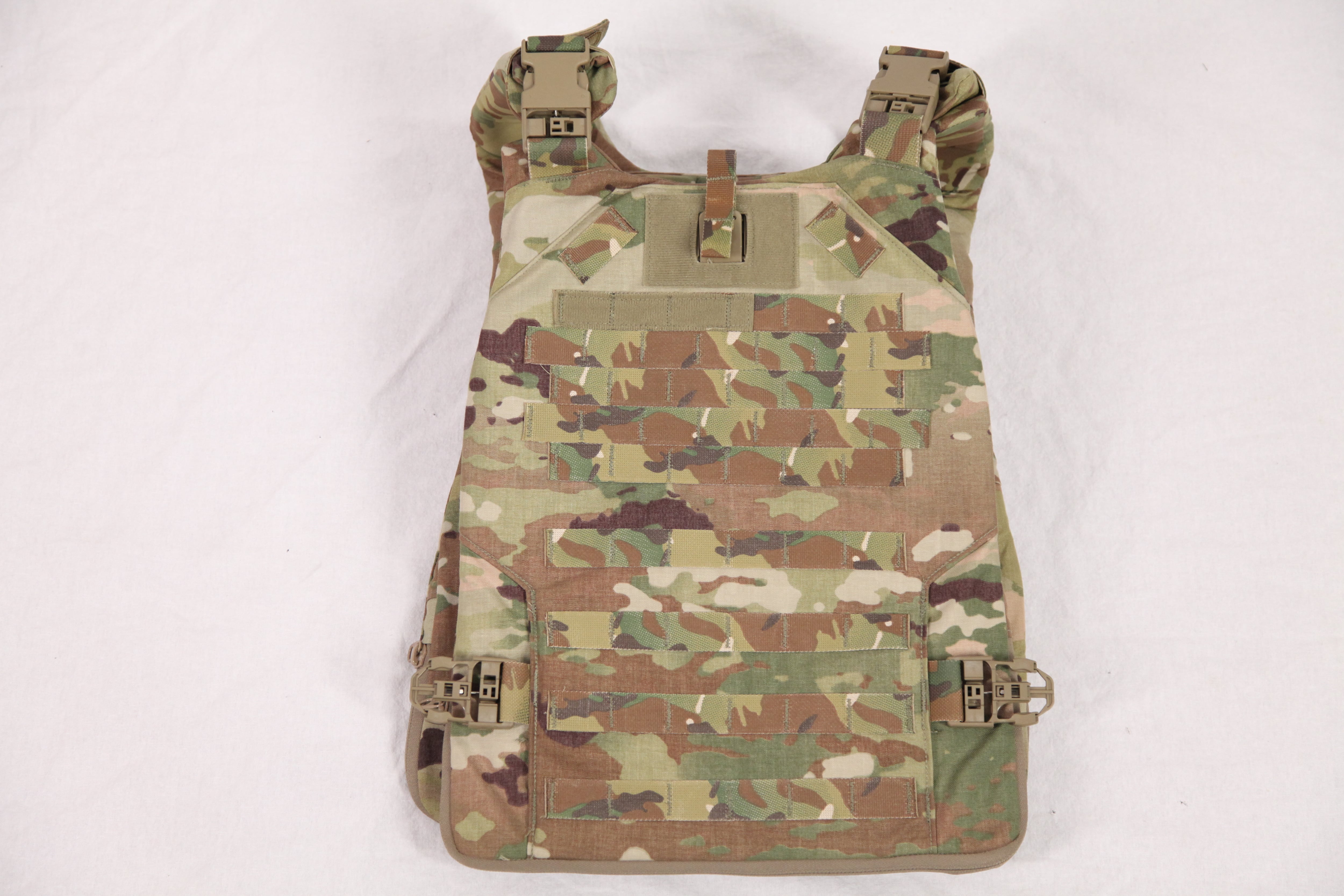
The Modular Scalable Vest includes a quick-release feature.
Photo Credit: Courtesy PEO Soldier
Modular Scalable Vest : The Army developed a Soldier Plate Carrier System during the wars in Iraq and Afghanistan to offer a nimbler alternative to IOTV. The MSV is similar to the SPCS: old plates will work, as will new plates being developed to offer a variety of levels of protection and fits. It features a quick-release system for easy removal. And again, the MSV’s ballistic material offers similar protection at a lighter weight, as do the various optional plate inserts. In addition, the design is now a fully-government-owned program of record, whereas the SPCS was generated by an operational needs statement (a quick fix to address a newly-emerged need). That matters because future technology advancements can be more easily incorporated by the Army as production continues, Brown said.
: The Army developed a Soldier Plate Carrier System during the wars in Iraq and Afghanistan to offer a nimbler alternative to IOTV. The MSV is similar to the SPCS: old plates will work, as will new plates being developed to offer a variety of levels of protection and fits. It features a quick-release system for easy removal. And again, the MSV’s ballistic material offers similar protection at a lighter weight, as do the various optional plate inserts. In addition, the design is now a fully-government-owned program of record, whereas the SPCS was generated by an operational needs statement (a quick fix to address a newly-emerged need). That matters because future technology advancements can be more easily incorporated by the Army as production continues, Brown said.
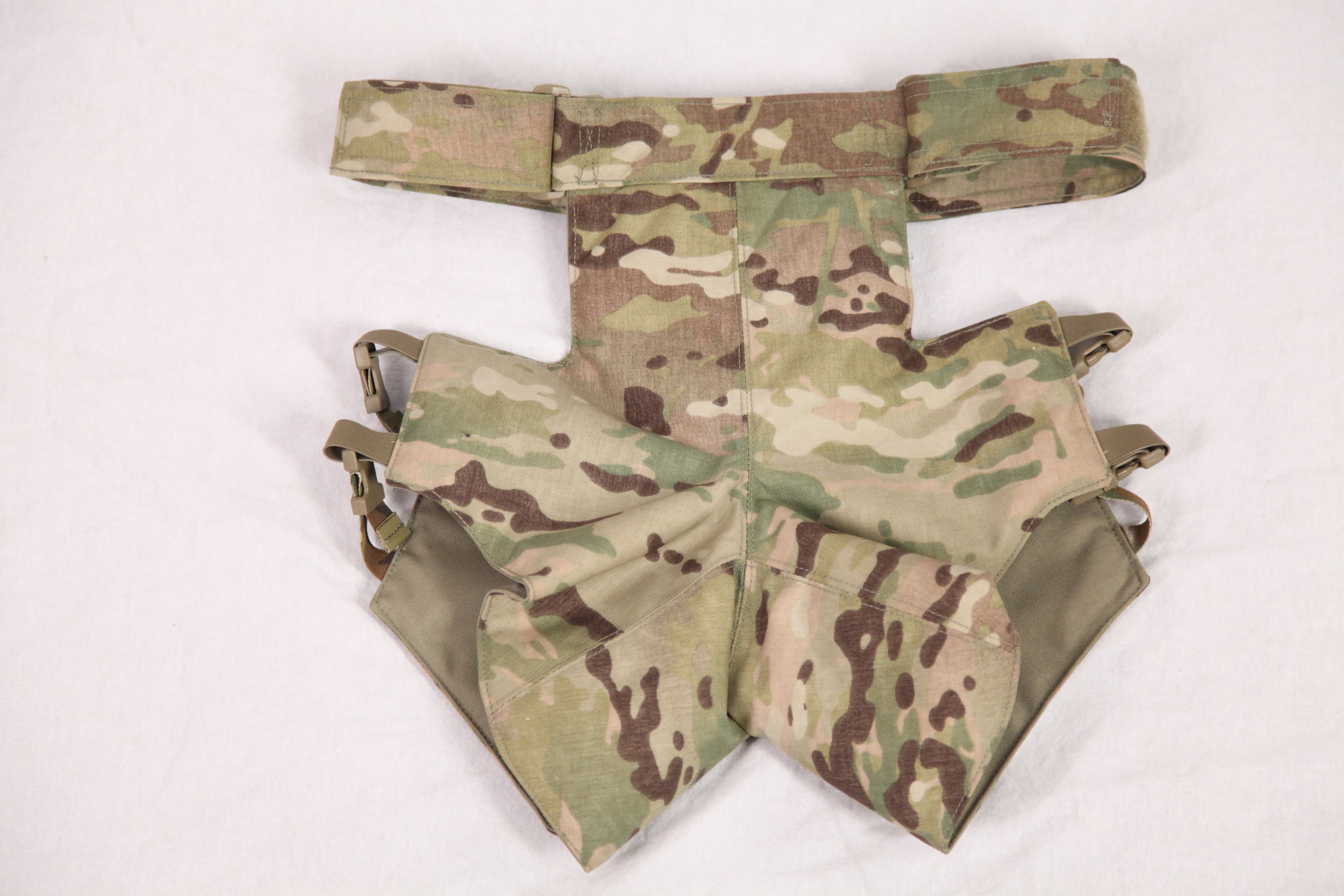
The Army's new Blast Pelvic Protection will replace two current protective items: an undergarment and an over-garment.
Photo Credit: Courtesy PEO Soldier
Blast Pelvic Protector : The new protection for the pelvis and femoral arteries will replace two current protective items: an undergarment and an over-garment. Brown said soldiers like how the simplified protector connects to the system and fits the body’s form, and she said feedback also indicated improved mobility.
: The new protection for the pelvis and femoral arteries will replace two current protective items: an undergarment and an over-garment. Brown said soldiers like how the simplified protector connects to the system and fits the body’s form, and she said feedback also indicated improved mobility.
Load Distribution System : With weight cut by advanced materials, Brown said, the Army managed to add a new element while cutting weight overall – one that distributes remaining weight more comfortably. The LDS consists of a ballistic combat belt that flows underneath the vest and a load-bearing spine that distributes weight to the waist rather than putting it all on the shoulders.
: With weight cut by advanced materials, Brown said, the Army managed to add a new element while cutting weight overall – one that distributes remaining weight more comfortably. The LDS consists of a ballistic combat belt that flows underneath the vest and a load-bearing spine that distributes weight to the waist rather than putting it all on the shoulders.
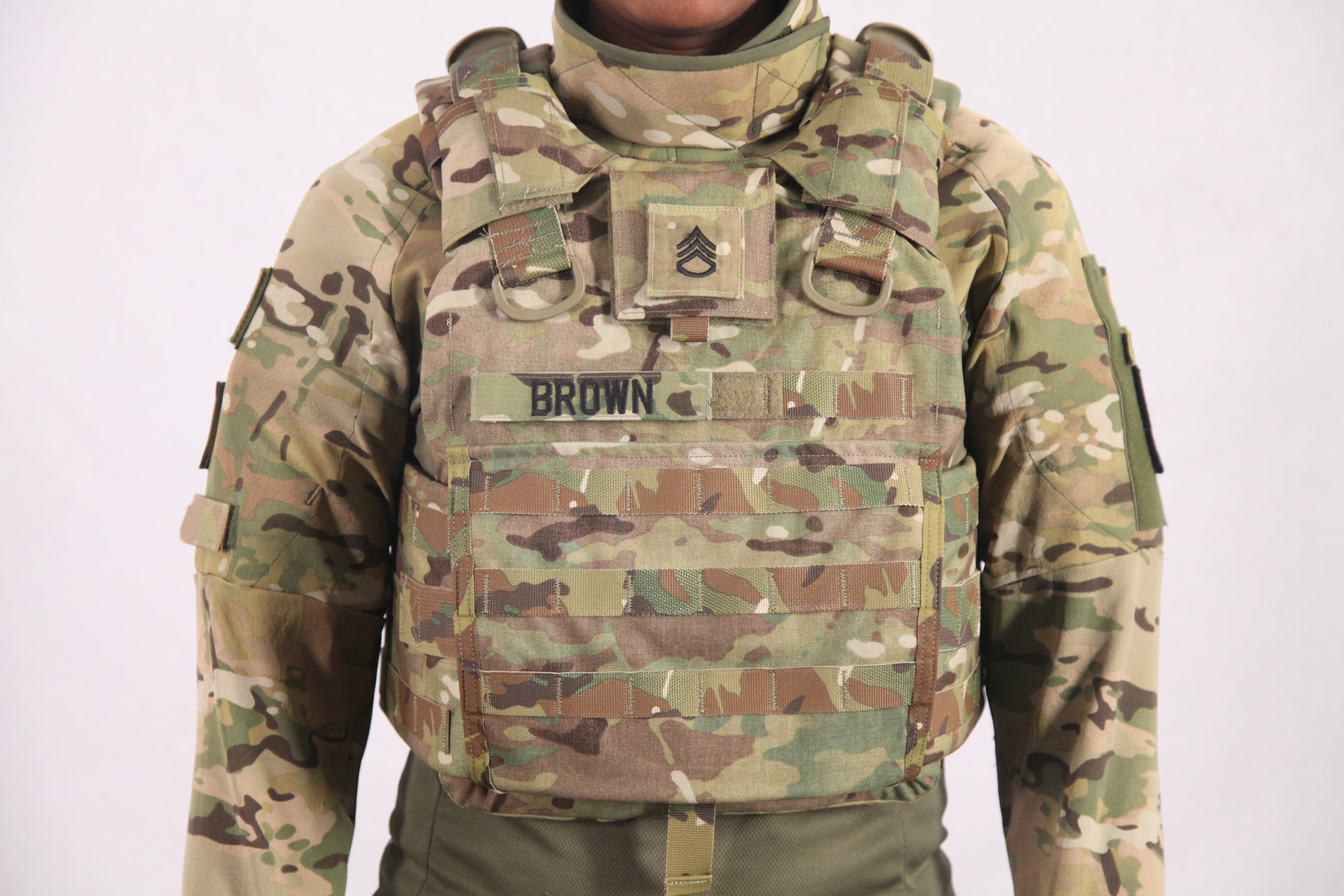
The Amy is rolling out a variety of plates, tailor-able to the mission to be worn with the Modular Scalable Vest.
Photo Credit: Courtesy PEO Soldier
Plates: The Army is developing new inserts in parallel with TEP, and have also been cleared for development. The hard plates are coming in at about 7 percent lighter than their current protection equivalents, Brown said. The options provide modularity in strength and weight for different missions and fit for different bodies, including two new plates tailored to female body types. As with the ballistic material on the vest and shirt, Brown said the Army didn't want to get specific on the threshold of munitions that each plate protects against. She did say that, fully loaded, the plates and vest "are able to defeat the most prevalent threats on the battlefield" and compared to IOTV offered "no degradation of performance, only enhancement."
Integrated Head Protection System : The new helmet the Army has been working on for about three years will not clear the research and development milestone until late 2016. The PEO Soldier portfolio outlines objectives including protection against rifle threats and improved impact/blast protection over the current helmet at a slightly lighter weight. It should also be modular for possible add-ons like night vision, eye and mandibular (jaw) protection and an additional layer of armor for even more blast/ballistic resistance, among other attachments.
: The new helmet the Army has been working on for about three years will not clear the research and development milestone until late 2016. The PEO Soldier portfolio outlines objectives including protection against rifle threats and improved impact/blast protection over the current helmet at a slightly lighter weight. It should also be modular for possible add-ons like night vision, eye and mandibular (jaw) protection and an additional layer of armor for even more blast/ballistic resistance, among other attachments.





